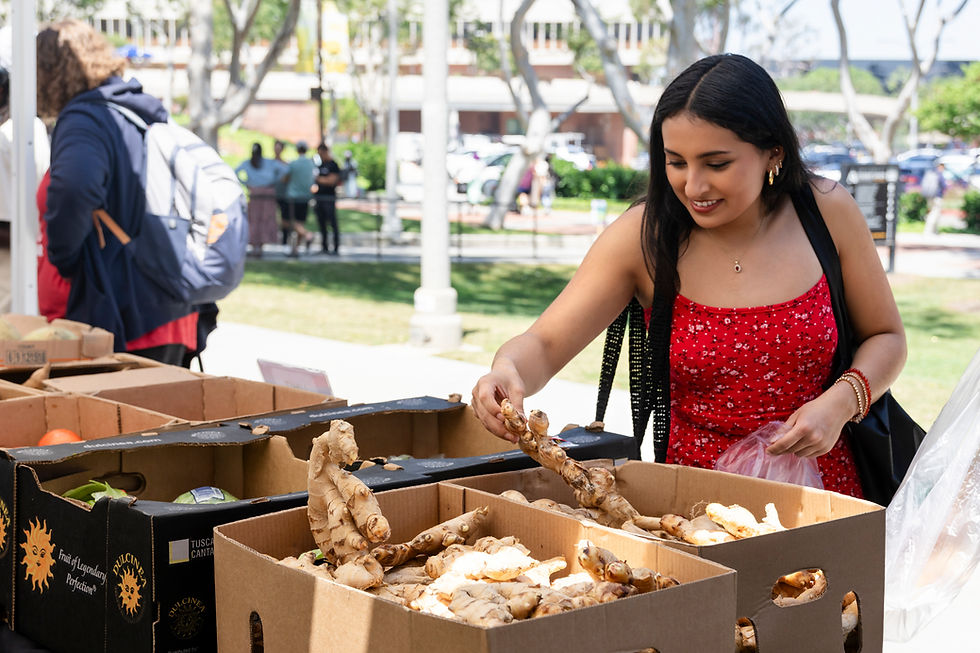Food Banks Struggle as Federal Funding Cuts Deepen: How It Affects College Students
- Karlen Nurijanyan

- Mar 23
- 4 min read
Updated: Mar 26
Across the nation, food banks are facing unprecedented challenges due to recent Federal Funding cuts in the food assistance programs. With resources stretched thin, communities that rely on these services — including college students — are left with fewer options for nutritional support. Programs like The Emergency Food Assistance Program (TEFAP) and other USDA-backed initiatives are seeing funding reductions, forcing food banks to make tough decisions about how to allocate their dwindling supplies.
The Shrinking TEFAP Supply
For decades, TEFAP has played a critical role in supplying food banks with staple goods to support food-insecure populations. However, recent federal budget adjustments have led to significant cuts in food shipments. Beginning in April 2025, monthly TEFAP distributions will shrink by roughly 250,000 pounds—an alarming shortfall at a time when demand continues to rise. (Source)
This reduction in available food supplies means that food banks must find alternative ways to meet the growing needs of their communities. Without TEFAP’s consistent support, many organizations will struggle to provide enough meals, especially in urban centers where food insecurity is already widespread.

The Fallout for Local Food Banks
The financial impact of these funding cuts is being felt in food banks across the country. In Texas, the San Antonio Food Bank anticipates losing approximately $3 million in annual funding—a reduction that represents 20% of its budget for food purchases. With fewer federal resources, organizations must either secure private donations or reduce the number of people they serve. (Source)
Meanwhile, in Sacramento, food banks are struggling to fill the gaps left by USDA shipment suspensions. With nearly 300 truckloads of food on hold nationwide, communities that depend on these deliveries are now facing supply chain disruptions. Volunteers and nonprofit leaders are racing to find local donors and additional funding sources to maintain operations. (Source)
The Impact on College Students
The consequences of these cuts extend beyond traditional food pantry users to include college students, who are increasingly relying on food banks to supplement their nutritional needs. Rising tuition costs, expensive housing, and inflation have made it harder for students to afford balanced meals, pushing many toward campus food pantries and local food banks for support.
Programs like Student LunchBox, which source food through partnerships with the Los Angeles Regional Food Bank—are directly affected by TEFAP’s cuts. Fewer resources mean fewer fresh food options and limited meal availability, exacerbating food insecurity on college campuses. Without reliable access to nutritious meals, students face additional challenges that can negatively impact their academic performance, mental health, and overall well-being.
Broader Consequences and Long-Term Risks
Beyond immediate food shortages, these funding reductions also threaten local agricultural economies. Programs like the Local Food for Schools Program and the Local Food Purchase Assistance Cooperative Agreement Program have been discontinued, disrupting the supply chain between farmers and institutions. Without federal support, small- and medium-sized farms that relied on these contracts now face financial uncertainty. (Source)
Additionally, concerns are mounting over potential structural changes within the federal government, such as the dismantling of departments like the U.S. Education Department. While food assistance programs remain under the USDA’s oversight, shifts in federal policy could further affect funding availability for student meal programs and basic needs initiatives. (Source)
How Communities Are Responding
In the wake of these reductions, food banks, community organizations, and local governments are exploring alternative solutions to sustain food assistance programs. In cities like Sacramento, food banks are appealing to private donors and local businesses for support. Crowdfunding efforts, grant applications, and corporate sponsorships are becoming increasingly essential in maintaining operations. (Source)
Despite these efforts, many organizations remain concerned about their long-term sustainability. The uncertainty surrounding future federal policies makes planning difficult, leaving food banks in a precarious position as they attempt to serve growing numbers of food-insecure individuals.
As federal support dwindles, the role of local nonprofits like Student LunchBox becomes even more vital. By bridging the gap between food banks and students in need, these organizations play a crucial role in ensuring college students have access to reliable, nutritious food. Without intervention and community support, however, the impact of these funding cuts could have lasting consequences on food security across the country.
Like what you're reading?
About Student LunchBox
At Student LunchBox, we believe no student should have to choose between education and basic needs. As a 501(c)(3) charitable organization founded in 2020, we are dedicated to empowering college success through comprehensive basic needs support. Our innovative food recovery initiatives provide nutritious meals and essential supplies to economically disadvantaged students across Los Angeles County, allowing them to focus on their education and reach their full academic potential.
What sets us apart is our deep-rooted commitment to a college community-led, impact-driven, and sustainability-focused approach. Through strategic partnerships with major colleges and universities, we serve over 4,500 students every month, ensuring they have the resources they need to thrive academically.






